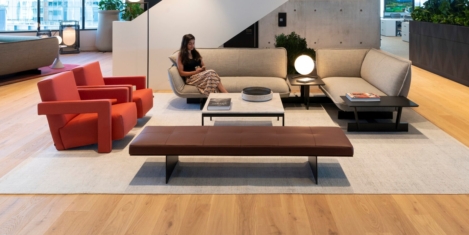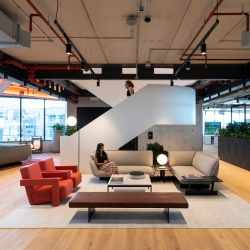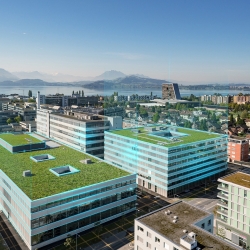To provide the best experiences, we use technologies like cookies to store and/or access device information. Consenting to these technologies will allow us to process data such as browsing behaviour or unique IDs on this site. Not consenting or withdrawing consent, may adversely affect certain features and functions.
The technical storage or access is strictly necessary for the legitimate purpose of enabling the use of a specific service explicitly requested by the subscriber or user, or for the sole purpose of carrying out the transmission of a communication over an electronic communications network.
The technical storage or access is necessary for the legitimate purpose of storing preferences that are not requested by the subscriber or user.
The technical storage or access that is used exclusively for statistical purposes.
The technical storage or access that is used exclusively for anonymous statistical purposes. Without a subpoena, voluntary compliance on the part of your Internet Service Provider, or additional records from a third party, information stored or retrieved for this purpose alone cannot usually be used to identify you.
The technical storage or access is required to create user profiles to send advertising, or to track the user on a website or across several websites for similar marketing purposes.
 Optimism among workers in the UK has been shaken in the wake of the COVID-19 pandemic, claims the ADP Research Institute’s People at Work 2021: A Global Workforce View. Nevertheless, two-thirds still have a positive outlook on the world of work for the next five years, mirroring the sentiment of people across the world. (more…)
Optimism among workers in the UK has been shaken in the wake of the COVID-19 pandemic, claims the ADP Research Institute’s People at Work 2021: A Global Workforce View. Nevertheless, two-thirds still have a positive outlook on the world of work for the next five years, mirroring the sentiment of people across the world. (more…)








 As 2020 came to a close, there was a palpable sense of hope that 2021 would bring with it a fresh slate with the horrors of COVID behind us. Alas, that has not happened and it seems we have more of the same, certainly for the next few months and with that the speculation about the ‘future of the office’ will no doubt continue.
As 2020 came to a close, there was a palpable sense of hope that 2021 would bring with it a fresh slate with the horrors of COVID behind us. Alas, that has not happened and it seems we have more of the same, certainly for the next few months and with that the speculation about the ‘future of the office’ will no doubt continue. 




 Just as the pandemic has forced many to re-think their relationship to the office, developers and building owners have been forced to reassess the service they offer to meet the altered needs of occupiers, according to research by
Just as the pandemic has forced many to re-think their relationship to the office, developers and building owners have been forced to reassess the service they offer to meet the altered needs of occupiers, according to research by 
 Lockdown has meant the majority of UK office-based employees have taken up working from home arrangements over the last year, and it seems that many employers lack trust in their employees when they can’t physically see them. Last year
Lockdown has meant the majority of UK office-based employees have taken up working from home arrangements over the last year, and it seems that many employers lack trust in their employees when they can’t physically see them. Last year 
 A new survey of many of the world’s leading real estate investors finds that 92 percent of respondents expect demand for healthy buildings to grow in the next three years. The report claims that this is a compelling signal of the direction the real estate sector is heading. This finding, among others, is captured in a report titled
A new survey of many of the world’s leading real estate investors finds that 92 percent of respondents expect demand for healthy buildings to grow in the next three years. The report claims that this is a compelling signal of the direction the real estate sector is heading. This finding, among others, is captured in a report titled 
 Research by VINCI Facilities claims that the UK facilities management sector does not possess a thorough, detailed strategic approach to combatting climate change. In the autumn of 2020
Research by VINCI Facilities claims that the UK facilities management sector does not possess a thorough, detailed strategic approach to combatting climate change. In the autumn of 2020 


 During the pandemic, 1 in 4 (25 percent) employees say they’ve had no wellbeing check-ins from their workplace. The research from
During the pandemic, 1 in 4 (25 percent) employees say they’ve had no wellbeing check-ins from their workplace. The research from 








May 13, 2021
The pivotal role of remote working in the journey to jab the nation
by Michael Whitmore • Comment, Flexible working